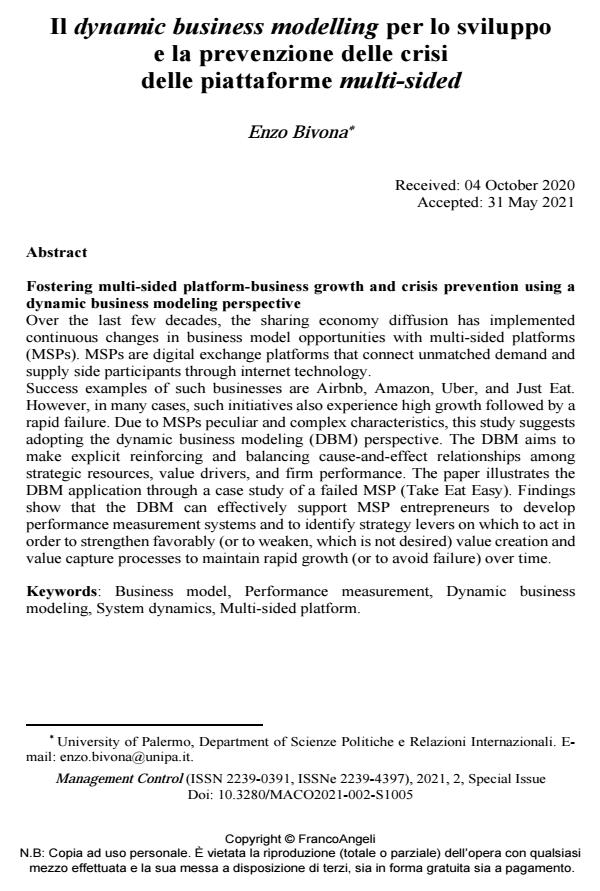Fostering multi-sided platform-business growth and crisis prevention using a dynamic business modeling perspective
Journal title MANAGEMENT CONTROL
Author/s Enzo Bivona
Publishing Year 2021 Issue 2021/suppl. 2
Language Italian Pages 23 P. 91-113 File size 458 KB
DOI 10.3280/MACO2021-002-S1005
DOI is like a bar code for intellectual property: to have more infomation
click here
Below, you can see the article first page
If you want to buy this article in PDF format, you can do it, following the instructions to buy download credits

FrancoAngeli is member of Publishers International Linking Association, Inc (PILA), a not-for-profit association which run the CrossRef service enabling links to and from online scholarly content.
Over the last few decades, the sharing economy diffusion has implemented continuous changes in business model opportunities with multi-sided platforms (MSPs). MSPs are digital exchange platforms that connect unmatched demand and supply side participants through internet technology. Success examples of such businesses are Airbnb, Amazon, Uber, and Just Eat. However, in many cases, such initiatives also experience high growth followed by a rapid failure. Due to MSPs peculiar and complex characteristics, this study suggests adopting the dynamic business modeling (DBM) perspective. The DBM aims to make explicit reinforcing and balancing cause-and-effect relationships among strategic resources, value drivers, and firm performance. The paper illustrates the DBM application through a case study of a failed MSP (Take Eat Easy). Findings show that the DBM can effectively support MSP entrepreneurs to develop performance measurement systems and to identify strategy levers on which to act in order to strengthen favorably (or to weaken, which is not desired) value creation and value capture processes to maintain rapid growth (or to avoid failure) over time.
Keywords: Business model, Performance measurement, Dynamic business modeling, System dynamics, Multi-sided platform
Enzo Bivona, Il dynamic business modelling per lo sviluppo e la prevenzione delle crisi delle piattaforme multi-sided in "MANAGEMENT CONTROL" suppl. 2/2021, pp 91-113, DOI: 10.3280/MACO2021-002-S1005